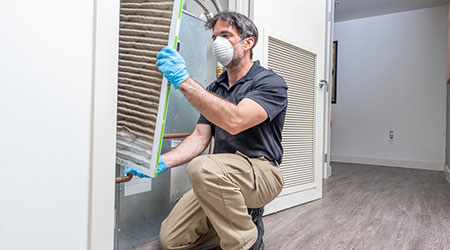At the onset of the COVID-19 pandemic, much of the focus for controlling the spread of the coronavirus in institutional and commercial facilities fell on sanitizing surfaces and washing hands. As research and experience with the illness increased, attention eventually turned to the role of HVAC systems and, in particular air filtration, in minimizing the spread of COVID-19.
Hospital HVAC systems are by no means the only safeguard to protect healthcare workers from getting infected. The role of the appropriate personal protective equipment (PPE) is extremely important in providing the first level of defense.But an enhanced HVAC system design minimizes the recirculation of COVID-19-contaminated air in the facility’s air distribution system, according to Health Facilities Management.
As managers continue to learn more about the means of transmission of COVID-19, the design engineer and facilities engineer need to work together to ensure the modified hospital engineering systems can perform effectively to minimize the risk associated with nosocomial transmission of the coronavirus.
Mechanical ventilation systems are part of the mechanism for controlling airborne infection in hospitals. The goals of ventilation systems are to replace contaminated air with clean air, to minimize the mixing of dirty and clean air, and to regulate ambient temperature and humidity to help with asepsis and odor.
Click here to read the article.

 Grounding Healthcare Spaces in Hospitality Principles
Grounding Healthcare Spaces in Hospitality Principles UC Davis Health Selects Rudolph and Sletten for Central Utility Plant Expansion
UC Davis Health Selects Rudolph and Sletten for Central Utility Plant Expansion Cape Cod Healthcare Opens Upper 2 Floors of Edwin Barbey Patient Care Pavilion
Cape Cod Healthcare Opens Upper 2 Floors of Edwin Barbey Patient Care Pavilion Building Sustainable Healthcare for an Aging Population
Building Sustainable Healthcare for an Aging Population Froedtert ThedaCare Announces Opening of ThedaCare Medical Center-Oshkosh
Froedtert ThedaCare Announces Opening of ThedaCare Medical Center-Oshkosh